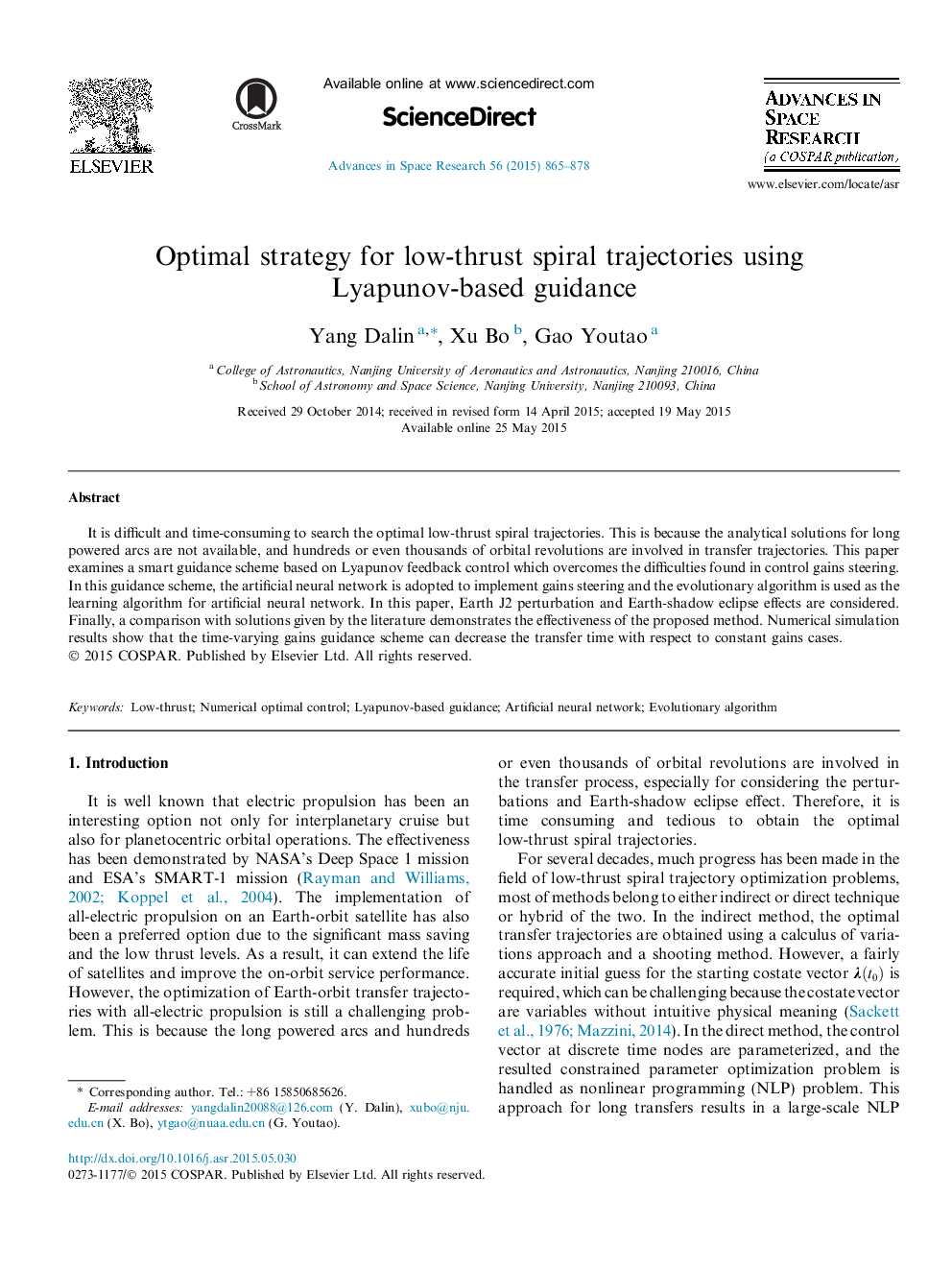| Article ID | Journal | Published Year | Pages | File Type |
|---|---|---|---|---|
| 1763821 | Advances in Space Research | 2015 | 14 Pages |
•Time-varying gains are more appropriate than constant gains.•A time-varying gains steering strategy is given.•The obtained solutions have the closed form.•The proposed method can find the optimal solution.
It is difficult and time-consuming to search the optimal low-thrust spiral trajectories. This is because the analytical solutions for long powered arcs are not available, and hundreds or even thousands of orbital revolutions are involved in transfer trajectories. This paper examines a smart guidance scheme based on Lyapunov feedback control which overcomes the difficulties found in control gains steering. In this guidance scheme, the artificial neural network is adopted to implement gains steering and the evolutionary algorithm is used as the learning algorithm for artificial neural network. In this paper, Earth J2 perturbation and Earth-shadow eclipse effects are considered. Finally, a comparison with solutions given by the literature demonstrates the effectiveness of the proposed method. Numerical simulation results show that the time-varying gains guidance scheme can decrease the transfer time with respect to constant gains cases.
